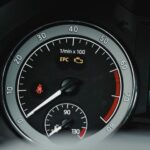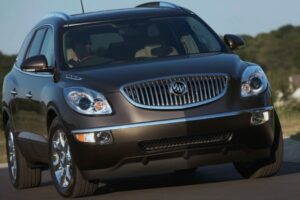Many travelers consider the Winnebago Rialta as the best RV on the road. The Rialta provides powerful engine performance and impressive gas mileage. It is also easy to maneuver even through winding roads.
Winnebago built the Rialta on a Volkswagen Transporter (T4) cab chassis. It features a 2.5L five-cylinder motor, a 2.8 V6 engine with 201 horsepower, or a 2.8L VR6 with 140 horsepower.
The Winnebago Rialta’s automatic four-speed transmission comes with a 150-amp alternator and a 280-amp battery. The company built the Rialta motor home as an alternative for the larger class A motor home. However, Winnebago discontinued the Rialta after 2005.
Read on to learn more about Winnebago Rialta’s specifications, features, pros and cons, and important tips for maintaining it.
About the Winnebago Rialta

Winnebago manufactured the Rialta on a Volkswagen Transporter (T4) cab chassis. It can either have a 2.5L five-cylinder motor, a 2.8 V6 engine with 201 horsepower, or a 2.8L VR6 with 140 horsepower.
Its automatic four-speed transmission has a 150-amp alternator and a 280-amp battery. Winnebago created the Rialta motor home as an alternative for the larger class A motor home. However, they discontinued it after 2005.
Winnebago Industries Incorporation in the U.S. had manufactured motorhomes or recreational vehicles for more than 50 years. They had built about 8,000 Winnebago Rialta motorhomes from 1994 to 2005.
The Volkswagen Rialta offered an ABS (Anti-Lock Braking System), independent suspension, and rack-and-pinion steering. The Volkswagen Rialta RV provided all the comforts of home and driver-assistance equipment.
Examples are cruise control, air conditioning, power mirrors, and power windows. But the company discontinued the use of the Volkswagen chassis in 2003.
The Winnebago Rialta included a microwave oven, a single-door 3-way refrigerator, a stainless-steel sink, a two-burner range stove, and a counter extension.
Most Winnebago Rialta motor homes provide an entertainment system that includes cable, TV, and CD player. The motor home has an adequately equipped bathroom with a sink, a shower, toilet bowl, cabinets, and a vanity shelf.
Winnebago Rialta Specifications and Features
1. Engine
The 2005 Rialta’s engine is a 2.8L fuel-injected V-6 with 201 horsepower. It also has a 4-speed automatic transmission with a 150-amp alternator and a 280-amp battery.
The 1997 to 2001 Rialta model sported a VW 140 hp gas engine, and the 2002 to 2005 model used a VW 301 hp gas engine.
2. Dimensions
The Rialta’s dimensions are 20 to 21 feet and 8 inches long, 8 feet and 10 inches high, and 7 feet and 4 inches wide. Furthermore, it provides a 7-gallon propane tank and a 9-gallon water tank.
3. Interior
Rialta’s interior is equipped with the comforts of home. In fact, there are 4 different floor plans. As a Class C motor home, it featured the conveniences of home. Thus, you can take a shower or attend to the call of nature right inside the vehicle.
You can even heat food in the microwave or cook your favorite dish using the stove. You could also store left-over food in the ref. Indeed, more small conveniences would make traveling in your Winnebago Rialta a pleasure.
4. Exterior
The Rialta features a low-profile body resulting in a near-zero drag. This effect allows smooth driving even at tops speeds. Volkswagen designed the exterior aerodynamically to ensure safe travels.
The exterior design featured rounded corners and impressive sculpted structures that allow vehicle maneuverability.
The Rialta’s 20-21 feet length and body dimensions provide easy driving and a tighter turning radius. On average, it weighs 7,275 pounds.
5. Wheels/Tires
The Winnebago Rialta, built from 1996 to 2001, has specific tire sizes. The front axle’s tire size is 195/70R15C, and the rear axle’s tire size is 215/70R15C.
The front and rear wheel sizes are 15x6J. Its sidewall plies are made of polyester with a load index of 104 for the front and 109 for the rear.
Slight differences occur for Rialta’s model from 2002 to 2005. The front axle tire size is 195/65R 16C, and the rear axle’s tire size is 215/65R16C. The sidewall plies also have the same polyester material as the previous Rialta models.
Likewise, the load index is the same as the earlier models. However, the front and rear wheel sizes are slightly larger at 16x6J.
6. Drivetrain
The Rialta utilizes an electronically-controlled transmission system and a manual transmission in some models. The company built the motorhome on a Volkswagen powertrain and chassis.
7. Suspension
The Winnebago Rialta featured a 4-speed automatic transmission, a 150-amp alternator, and a 280-amp battery. The 2005 Rialta featured rear air springs, a 2,000-lb draw-bar trailer hitch, and 16-inch tires.
8. Lighting
The Rialta’s headlight is a standard 9003 Halogen bulb. The front running lights are amber, and the rear lights are red.
You can purchase the auto brake taillights, turn signal lights, and backup lights from common automotive stores. You can also buy all of the fuses from most automotive parts outlets.
The Winnebago Rialta motorhome uses a porch light with a #1003 bulb. Beware of using hotter light bulbs that could melt surrounding materials.
9. Brakes
The 2000 to 2005 Rialta does not use the rear wheels’ brake pad wear sensors. However, the Winnebago Rialta sported OEM front brakes. The brake consists of the disc rotor, brake pads, caliper seal, master cylinder, and brake line.
In the old brakes, the pad plus the backing plate measured 10.3 mm, with the brake disc measuring 12.47 mm.
10. Ignition
You could start the motorhome RV with the traditional ignition key. The 2001 Rialta and older used a standard key. Hence, if you lost your keys, you can have another key replacement to operate the ignition.
Consequently, the 2002 Winnebago Rialta and newer models have utilized chip-encoded keys featuring the electronic system called the ‘immobilizer.’
Once you lost the key, you may use a standard key, but the engine will start and then sputter. Volkswagen has declared the keys obsolete.
Thus, buying a Winnebago Rialta, request a duplicate key that works, and hides it somewhere safe.
11. Unique Features
The motorhome has undergone some changes throughout its production period. There are also four different floor plans.
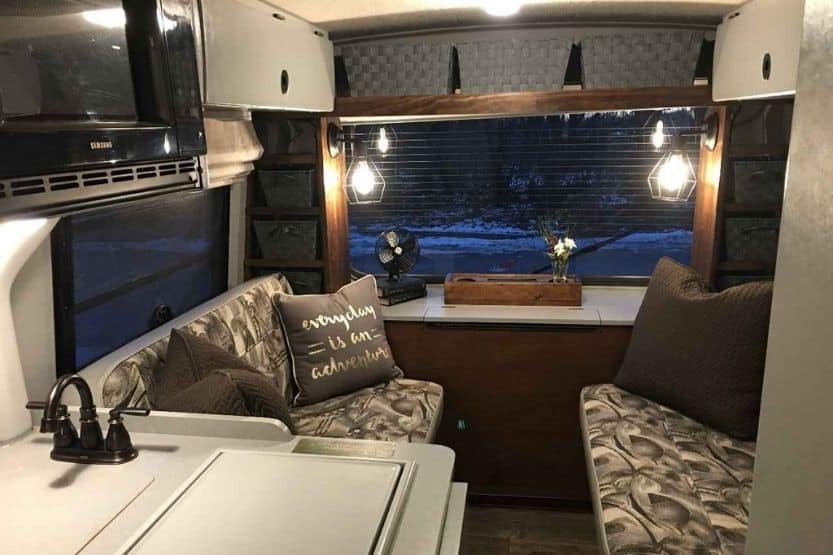
Here are some of the Winnebago Rialta’s unique features:
- Convertible second-row captain’s chairs to a bed
- Convertible rear bench seats to a double-sized bed
- One driver plus 7-passenger capacity with a sleeping capacity of four
- Hideaway dinette-table
- Bathroom and fold-down sink
- Microwave
- Two burner stoves
- Propane water heater
- 7-gallon propane tank
- 13-gallon black water tank
- 9-gallon greywater tank
- 20-gallon freshwater tank
- Rooftop air-conditioner
- Storage area under both captain’s chair
- Precision engineering by Volkswagen
- Passenger and driver’s seats 180 degrees swivel to face the rear
12. Top Speed of Winnebago Rialta
You can go from 0 to 60 mpg within 21 seconds. Nonetheless, the Rialta’s top speed has not been established yet, as it is not designed for high-speed driving.
You cannot possibly want to race with all the loaded cargo your vehicle carries. Your fuel consumption on an average city-highway speed is under 15 mpg due to this slow speed.
Below is one of the best Winnebago Rialta reviews. It looks at the various specs and features of the Volkswagen Eurovan RV motorhome:
Pros and Cons of Winnebago Rialta RV
Pros
1. Easy to Maneuver
You can easily maneuver the Rialta even in congested areas. You could also park it in a normal parking space for cars because of the Rialta’s compact dimensions.
2. Superb Fuel Mileage
The Rialta’s fuel mileage is superb at around 15 to 16 miles per gallon. You get every bit of your money’s worth.
3. Excellent Warranty Coverage
Both Winnebago and Volkswagen provided an excellent warranty for the Rialta. Winnebago covers the Rialta’s coach body for two years per 24,000 miles.
Meanwhile, Volkswagen covers the chassis/cab for two years per 24,000 miles. The company also covers the power train for 5 years per 50,000 miles. [1]
4. Precision Engineering and High-Quality Materials
The hallmark of German vehicles is precision engineering. Volkswagen’s German company built the Rialta durable with high-quality materials, free from any mechanical defects. As long as you maintain your Rialta properly, you will not encounter mechanical problems.
5. Efficient Engine
The six-cylinder gasoline engine works efficiently and reliably. The gas engine is cost-effective as well.
Cons
1. Expensive Parts
Your Winnebago Rialta has some expensive parts. So, you have to conduct regular overall checkups to diagnose and repair damages while still minor ones. Major repairs can cost you hundreds of dollars.
2. Limited Carrying Load
You can only carry with you less than 1,000 to 2,000 pounds. This weight includes your paraphernalia, food, water, and what you need to cook your food.
There are different maximum loads for other Rialta motorhomes. You may want to inquire about this aspect before buying.
Winnebago Adventurer Specs and Review
What Class Is a Winnebago Rialta?
The Rialta is typically a Class C motorhome. It is smaller in size than the Class A and Class B motorhomes. Thus, it has better mileage than the other two classes.
Winnebago Rialta Cost
A Winnebago Rialta has a base value of $52,708. [2] For used Rialta motorhomes, the price can range from $20,000 to $50,000. The price would depend on how the motorhome is well-maintained.
Why Buy a Rialta?
The Rialta is a great choice for an affordable RV due to its powerful engine, good size, easy maneuverability, and superb gas mileage of 18 to 22 miles per gallon.
Furthermore, the Winnebago Rialta provides all the basic features travelers would like in their homes: a dinette table, microwave, stove, refrigerator, beds, and a toilet/bath. For more of the features, kindly refer to the list mentioned above.
How Much Does a Winnebago Rialta Weigh?
The Winnebago Rialta weighs 2,857 pounds with a regular cab, a long bed, and 188.5 inches in length.
Rialta weighs 3,128 pounds when it comes with an extended cab with a single bed and is 195.7 inches in length.
Why Did Winnebago Stop Making the Rialta Motorhome?
Volkswagen had stopped importing Rialta’s Eurovan chassis and powertrain to the U.S. in 2003. Therefore, Winnebago stopped production when the parts they had stockpiled ran out in 2005.
Tips for Maintaining Your Winnebago Rialta
1. Conduct Complete Check Annually
Volkswagen recommends a complete check of the vehicle every 10,000 miles. Note that the first thing you should check is the engine, as it is the heart of your Rialta.
You should take your vehicle to the motor shop immediately if you notice some damages early on. You do not have to wait for a year to do it. By then, the damage may become major and would cost you more.
2. Change the Brake Fluid Every Two Years
You should change the brake fluid every 2 years, regardless of mileage. Remember to use only the manufacturer’s recommended fluid or the DOT-4 brake fluid.
3. Check the Brakes Regularly
Before traveling or going for a long-distance drive, you must check your brakes first. You should maintain the wheel bearings properly with sufficient lubrication.
You should replace your brakes when there is insufficient material on them and when the activation is slow.
4. Replace the Fuel, Coolant, Hydraulic, and Air Filters Regularly
You can schedule changing all these filters together with your oil change. These replacements would ensure that your motorhome’s mechanical parts would function well.
Dirty filters will clog your system and cause damage. You have to ascertain that you change these filters as soon as you notice they are dirty. Otherwise, you can follow the scheduled filter change.
5. Check Your Wheels and Tires before Every Trip

Your Rialta’s tire pressure must be sufficient – not under or over-inflated. Over-inflated tires could explode, or underinflated tires could cause serious accidents. You should tighten the wheel’s lug nuts sufficiently too.
6. Change Your Rialta’s Oil Every 3,000 to 5,000 Miles
You have to remember this important pointer because dirty oil could damage your engine. Buying a new engine is a lot more costly than changing your oil every 3,000 to 5,000 miles.
7. Clean the Rialta’s Convertibles After Every Drive
You should thoroughly clean the foldable beds, dinner tables, and convertible seats as they can amass dirt. This accumulation of leftover foods and dirt would tend to harbor microbes, molds, and fungi. Many of these microorganisms could cause disease or infections.
After cleaning, you have to lubricate the sliding parts to ensure proper function and prevent rust formation. Remember to lubricate the windows and doors as well.
Winnebago Fuse Specs and Reviews
Conclusion – Winnebago Rialta Review and Specs
The Winnebago Company built the Rialta motorhome as an incredible option for the larger class A motor home. The company also built on the Volkswagen Transporter (T4) cab chassis.
Winnebago Rialta featured a 2.5L V6 engine or a 2.8 V6 engine with 201 horsepower. The vehicle’s transmission comes with an automatic four-speed transmission with a 280-amp battery and a 150-amp alternator.
The sad news, however, is that Winnebago discontinued Rialta’s production after 2005.
If you want to travel in style while enjoying the basic comforts of home, you could opt for a Rialta. There are still used Rialta motorhomes that are in good condition.
You could drive and park your Winnebago Rialta much easier than other motorhomes. The Rialta is worth the money as long as it has been well-kept and in good condition.
Related reading:

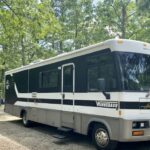
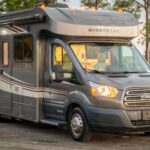
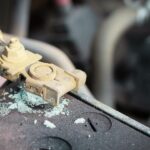
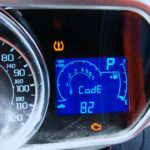
![Check Engine Light On and Off Intermittently [Causes and Fixes] check engine light on and off](https://roadsumo.com/wp-content/uploads/2021/06/check-engine-light-on-and-off-150x150.jpg)
